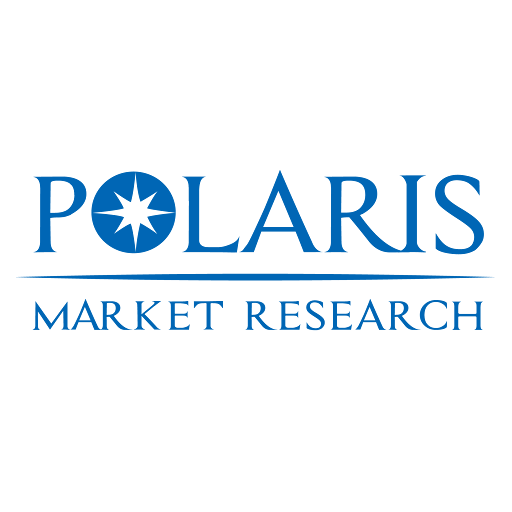Global OEM Insulation Market Expands as Demand Rises Across Automotive, HVAC, and Industrial Equipment Manufacturing

The global OEM insulation market was valued at USD 17.15 billion in 2024, growing at a CAGR of 5.4% during the forecast period. This steady expansion reflects increasing demand across transportation, industrial equipment, and appliance manufacturing sectors, where thermal and acoustic insulation remains integral to energy efficiency and regulatory compliance. OEM insulation—distinct from aftermarket solutions—is engineered directly into original equipment during production, necessitating high-performance materials such as mineral wool, polyurethane foams, and elastomeric composites. The market’s momentum is underpinned by global decarbonization initiatives, stricter emissions standards, and a structural shift toward lightweight, thermally efficient components across major manufacturing hubs.
Regionally, performance diverges based on industrial maturity, policy frameworks, and supply chain resilience. Asia Pacific leads global demand, accounting for over 38% of market share in 2024, driven by China’s and India’s expansive automotive and white goods production. According to Japan’s Ministry of Economy, Trade and Industry (METI), Japanese OEMs have intensified adoption of advanced insulation in HVAC and refrigeration systems to meet the revised Top Runner Program standards for energy efficiency. Meanwhile, India’s Production-Linked Incentive (PLI) scheme has catalyzed domestic appliance manufacturing, indirectly boosting demand for integrated insulation solutions. In China, despite recent property market corrections, industrial output remains robust, with the National Bureau of Statistics reporting a 6.1% year-over-year increase in machinery output in Q1 2025, sustaining OEM insulation uptake.
North America presents another high-growth corridor, buoyed by stringent federal regulations and reshoring trends. The U.S. Department of Energy’s 2023 Appliance and Equipment Standards Rulemaking mandates tighter thermal performance benchmarks for commercial refrigeration and residential HVAC systems, compelling OEMs to integrate next-generation insulation. Concurrently, the Inflation Reduction Act’s clean manufacturing incentives have spurred investment in domestic supply chains for insulation materials, mitigating reliance on imported components. Canada’s alignment with U.S. emissions targets, particularly under the Pan-Canadian Framework on Clean Growth, further reinforces regional demand. Notably, electric vehicle (EV) production in Mexico—bolstered by nearshoring and USMCA provisions—has created secondary demand for lightweight acoustic and thermal insulation in battery enclosures and cabin systems, positioning Latin America as an emerging but still nascent market.
Europe’s trajectory is shaped by its Green Deal architecture and circular economy mandates. Eurostat data indicates that industrial energy consumption in the EU-27 declined by 2.3% in 2024, yet manufacturing output rose 1.1%, highlighting intensified efficiency efforts where OEM insulation plays a pivotal role. The EU’s Ecodesign for Sustainable Products Regulation (ESPR), effective 2027, will require all energy-related products to incorporate recyclable or bio-based insulation materials, pressuring suppliers to innovate. Germany and France lead adoption, with German automotive OEMs integrating hybrid insulation composites to meet WLTP CO₂ targets. However, high energy costs and fragmented regulatory enforcement across Eastern Europe temper uniform growth. Nonetheless, retrofitting mandates for industrial machinery under the EU Industrial Emissions Directive continue to stimulate replacement demand for factory-integrated insulation systems.
Read More @ https://www.polarismarketresearch.com/industry-analysis/oem-insulation-market
Key restraints include volatile raw material pricing—particularly for petrochemical-derived foams—and logistical bottlenecks in emerging economies. In Latin America, though Brazil’s automotive sector shows promise, inconsistent import tariffs on insulation precursors hinder cost predictability. Similarly, in the Middle East and Africa, infrastructure gaps and limited local manufacturing constrain market penetration, despite growing investments in industrial zones like Saudi Arabia’s NEOM and Egypt’s Suez Canal Economic Zone. Nevertheless, these regions represent latent opportunities, especially as Gulf Cooperation Council (GCC) countries advance building codes that indirectly affect industrial equipment standards.
Emerging trends underscore a pivot toward sustainable and smart materials. Bio-based polyols, aerogels, and phase-change materials are gaining traction among European and North American OEMs seeking compliance with environmental, social, and governance (ESG) criteria. Digital twin simulations for thermal performance optimization are also becoming standard in R&D cycles, particularly in Asia Pacific’s high-volume production ecosystems. Additionally, the convergence of insulation with fire-retardant and antimicrobial functionalities—driven by safety regulations in public transport and healthcare equipment—is reshaping product development across all regions.
Trade dynamics further influence competitive positioning. U.S. Section 232 and 301 tariffs have redirected some insulation supply chains toward Southeast Asia, while EU carbon border adjustment mechanisms (CBAM) may soon affect imports of energy-intensive insulation products from non-compliant jurisdictions. Conversely, regional trade pacts like the Regional Comprehensive Economic Partnership (RCEP) are easing material flows within Asia, benefiting integrated manufacturers with multi-country footprints.
The competitive landscape remains moderately consolidated, with leading players leveraging scale, material science expertise, and global service networks to secure long-term OEM partnerships. Vertical integration—particularly in raw material sourcing and compounding—has become a critical differentiator, especially amid supply chain volatility. Innovation in thin-profile, high-R-value solutions is intensifying, as OEMs across sectors prioritize space-constrained applications without compromising performance.
- Owens Corning
- Saint-Gobain
- Knauf Insulation
- Armacell International
- Kingspan Group
- BASF SE
- Dow Inc.
- Morgan Advanced Materials
- NMC SA
- Zotefoams plc
More Trending Latest Reports By Polaris Market Research:
Industrial Microbiology Testing Services Market
Micro-Subscription Services Market
- AI
- Vitamins
- Health
- Admin/office jobs
- News
- Art
- Causes
- Crafts
- Dance
- Drinks
- Film
- Fitness
- Food
- Oyunlar
- Gardening
- Health
- Home
- Literature
- Music
- Networking
- Other
- Party
- Religion
- Shopping
- Sports
- Theater
- Wellness


